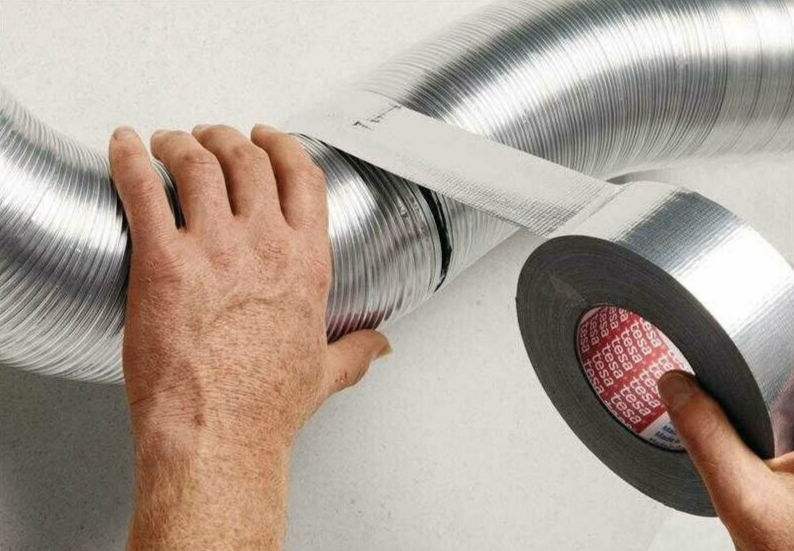What You Need to Know About the Durability and Strength of Reinforced Aluminium Tape
- kristinannieblog
- Aug 7
- 4 min read

With rapid developments in technology and industries, materials that provide advanced and improved properties are in everlasting demand. Among the various materials available, a particular type that stands out is the reinforced aluminium tape due to its unprecedented strength, toughness, and multi-functional nature.
Reinforced aluminium tape is more than a simple adhesive. It’s an advanced tool used across industries. Thus, understanding its composition, inherent characteristics, implications, and broader context of use is essential for both industry professionals and curious minds alike. In the following article, we dive deep into the unique and impactful world of reinforced aluminium tape.
What is Reinforced Aluminium Tape?
Reinforced aluminium tape is a robust adhesive tape that uses a layer of aluminium foil, reinforced with fabric and coated with a high-quality adhesive. This tape stands out for its innate strength, durability, and superior temperature tolerance. The properties of the tape make it an ideal component in sectors like construction, repair works, and ventilation systems.
The Composition and Construction of Reinforced Aluminium Tape
Reinforced aluminium tape undergoes a meticulous fabrication process to offer its distinct features. It begins with a layer of aluminium foil, which is then backed with a mesh or scrim made from fibreglass. This reinforcement strengthens the aluminium, adding durability and tensile strength, making it less susceptible to tears and punctures. Finally, a layer of adhesive allows secure attachment to various surfaces.
Various application uses considering its durability & strength
The robustness and resilience of reinforced aluminium tape extend its use beyond conventional roles. Industries such as HVAC utilise the tape as a sealant, given its high resistance and durability. It's also widely adopted in the construction sector for its superior adhesion that securely fastens materials together. In addition, its high temperature tolerance contributes to its use in automotive, aerospace, and electronic manufacturing industries.
Magnifying the Notable Features of Reinforced Aluminium Tape
1. Superior Strength
The key selling point of reinforced aluminium tape is its superior strength, which stems from the aluminium foil and fibre scrim reinforcement. This combination makes the tape highly resistant to tears, punctures, and mechanical stress. Hence, it's beneficial in areas requiring high security and long-term adhesion.
2. Excellent Durability
The high durability of the reinforced aluminium tape is directly linked to its resistance to environmental degradation. The tape can withstand harmful UV radiation, moisture, and adverse weather conditions, maintaining its adhesion over an extended period without showing signs of decay or failure.
3. High Resistance
Reinforced aluminium tape boasts an unusually high resistance to harsh conditions. The aluminium layer is intrinsically resistant to corrosion and most chemicals while the fibreglass reinforcement enhances the tape's mechanical properties against physical impact and stress.
4. Temperature Tolerance
The robust aluminium foil guarantees the tape's impressive temperature tolerance. The tape can withstand extreme temperatures without losing its adhesive properties or mechanical strength. This makes it ideal for a wide range of industrial applications, where conditions can become intense.
Decoding the Technical Specifics
Understanding the Measurement Standards
Reinforced aluminium tape is available in a variety of widths and roll lengths, depending on the intended use. The thickness of the tape can vary but typically ranges from 0.1 to 0.2 mm. While selecting the right size mainly depends on the application, a thicker tape signifies higher strength and durability.
Key Parameters Defining its Strength and Durability
The prominent parameters determining the strength and longevity of the aluminium tape are its thickness, pressure sensitivity, adhesive type, and reinforcement type. A thicker tape with a robust adhesive and a robust reinforcement promises higher strength and extended life.
The Environmental and Health Impacts of Reinforced Aluminium Tape
Environmental Implications
Given the aluminium content, there is a potential for reinforced aluminium tape to contribute to non-biodegradable waste. However, many tape manufacturers aim for a balance between performance and sustainability, producing increasingly eco-friendly versions of the tape that maintain an exceptional level of durability and strength.
Health Implications
Reinforced aluminium tape poses negligible health risks if handled correctly. It's critical to ensure that no particles are inhaled during the tape's application or removal. The adhesive used within the tape is typically non-toxic, and no adverse health implications have been reported when used appropriately.
The Future of Reinforced Aluminium Tape
Upcoming Advancements
The reinforced aluminium tape industry is continually innovating, exploring ways to enhance the tape's properties whilst considering environmental sustainability. Recent advancements involve the integration of nanotechnology, delivering a product that brings even higher strength, greater thermal conductivity, and lighter weight.
Developing Trends
One of the main trends is the growth in demand for bio-based adhesives given their eco-friendly feature. Alongside this, we can also see a surge in the demand for flame-retardant and lighter-weight types in various industries. Driven by technological advancements and escalating environmental concerns, we predict a bright and sustainable future for reinforced aluminium tape.
Conclusion: Reinforced Aluminium Tape - The Unsung Hero of the Industry
Undeniably, the reinforced aluminium tape symbolises progress in material technology. It is a commodity that has transformed various fields, offering superior strength, excellent durability, high resistance, and temperature tolerance. Despite some associated environmental concerns, the future of this resilient material seems to be heading towards a more sustainable and innovative path.









Comments